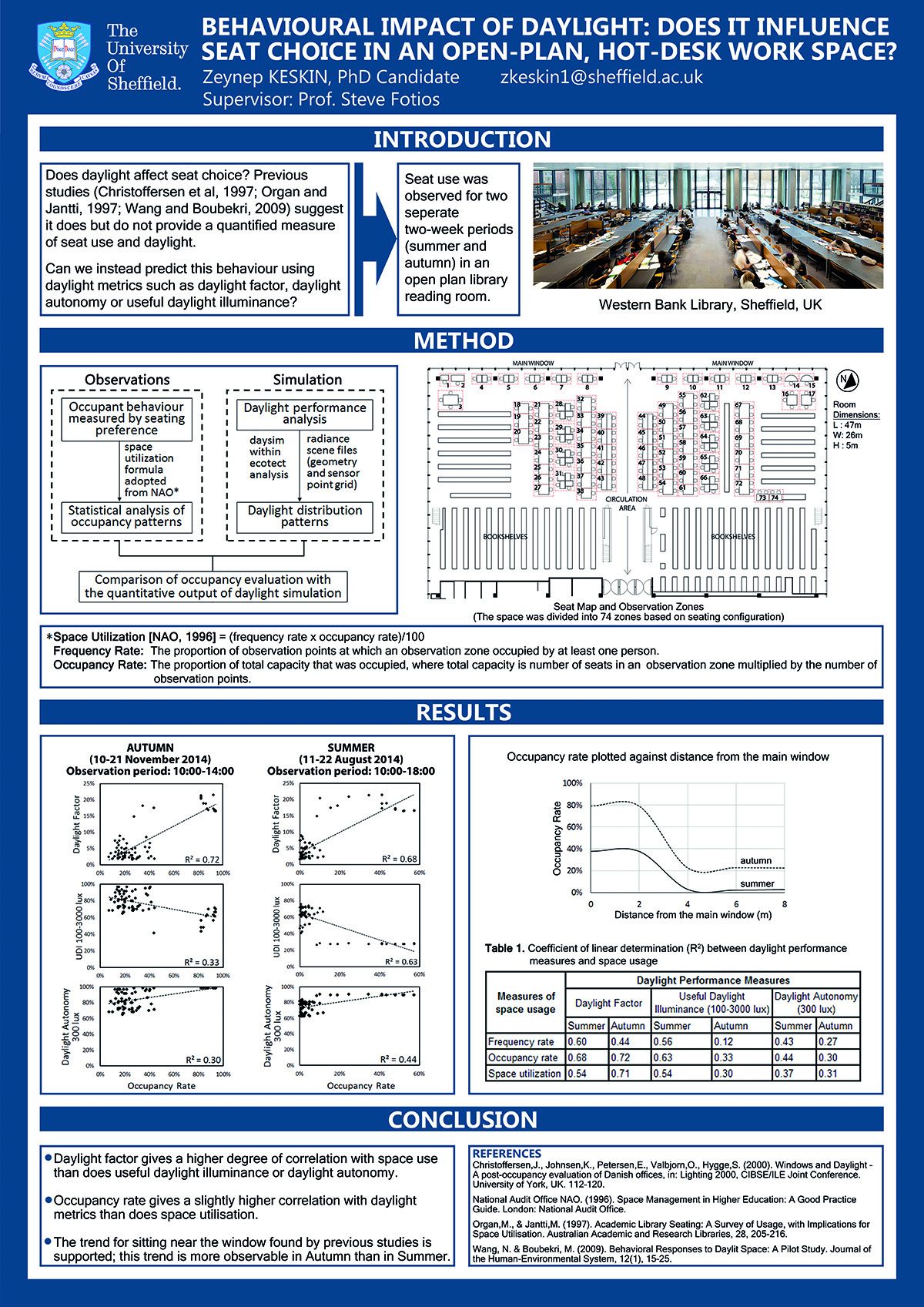Behavioural Impact of Daylight: Does it Influence Seat Choice in an Open-Plan, Hot-Desk Work Space?
by Zeynep Keskin, The University of Sheffield, UK
From its early stages of conception and development, daylight should dictate the quality of the architectural space, ultimately leading to a visual environment which is healthy, inspiring and stimulating for the occupants. In order to use the potential benefits and attributes of daylight in design practice, a set of daylight performance metrics have been developed. While these metrics predict the physically available amount of daylight in a building, field studies are necessary to understand how people tend to respond to changing indoor illuminance distributions. This study seeks to investigate the extent to which the influence of daylight on behaviour can be predicted, and for this the behaviour investigated is seating preferences of occupants in an open plan, hot-desking space in a university library. This was studied for two separate two-week periods, summer and autumn, when daylight and student attendance would vary; the aim was to determine patterns of space occupancy in relation to current daylight performance metrics. The influence of other factors on seat choice such as privacy, location of power sockets, view and noise is being examined in further work.
Research Questions
1) Does a significant relationship exist between occupant’s seating preference and daylight availability?
2) Can this be predicted with current daylight performance metrics such as daylight factor, useful daylight illuminance or daylight autonomy?
Objectives
1) to establish metrics for assessing space utilization (the proportion of time that the seat is used compared to its availability, or the number of people utilised desk area)
2) to identify and implement daylight performance metrics for measuring daylight availability
3) to find the most appropriate metric for measuring each attribute, i.e. space utilization and daylight availability
4) to compare the occupancy evaluations to the simulated daylight availability values
Methodology
The methodology implemented in this research was divided into two successive stages. First, field work observations were performed to understand how people tend to respond to changing illuminance distributions, i.e. where they prefer to sit in the room. The occupant behaviour is based on seating preferences, and it is calculated using the standard formula for space utilization adopted from the National Audit Office (NAO), as summarized below;
space utilization = (frequency rate x occupancy rate)/100 (Equation 1)
where
- frequency rate (%) = the proportion of observation points at which an observation zone was occupied by at least one person.
- occupancy rate (%) = the proportion of total capacity that was occupied, where total capacity is number of seats in an observation zone multiplied by the number of observation points.
- space utilization (%) = the product of frequency rate (%) and occupancy rate (%).
The second step of the research involves performing a daylighting analysis through simulation. The simulations were performed using DAYSIM within Autodesk Ecotect Analysis in order to predict the physically available amount of daylight in the room. Daylight was analysed using three metrics; (i) daylight factor, (ii) useful daylight illuminance, and (iii) daylight autonomy. The aim was to compare measures of daylight availability with measures of space usage, this being a proxy for occupancy behaviour.




